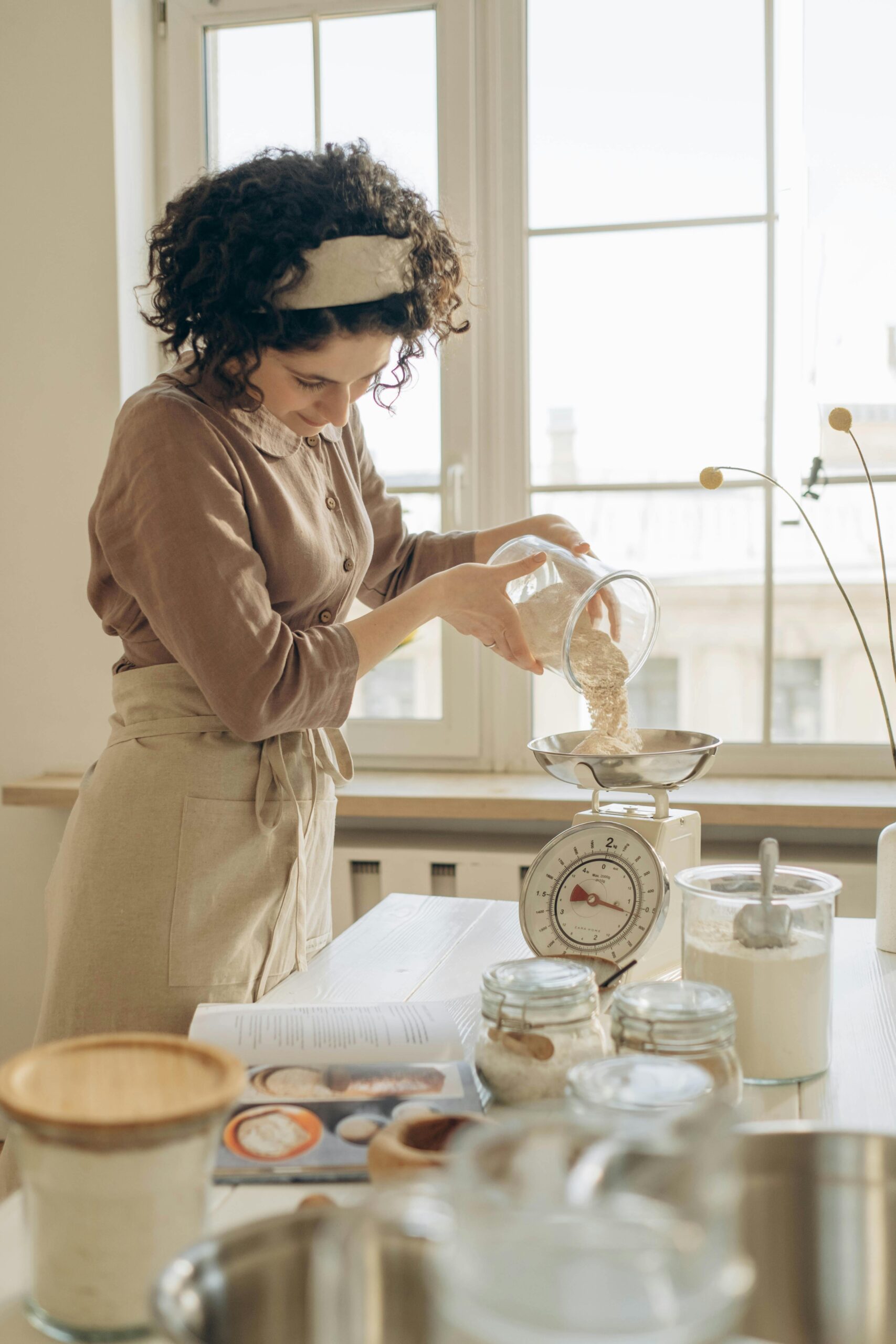In the heart of every kitchen, where recipes come to life and culinary magic unfolds, lies a crucial skill that separates the amateurs from the masters: the art of kitchen conversions. Imagine effortlessly switching between grams and ounces, unlocking a world of culinary possibilities with precision and ease. Today, we embark on a journey to demystify this essential skill, empowering you to conquer any recipe that comes your way. Welcome to a realm where measurements no longer pose a challenge but rather a gateway to culinary excellence. As the clinking of measuring spoons and the whirring of scales fill the air, we delve into the secrets of mastering kitchen conversions. From the delicate dance of grams to ounces, we unveil the simple yet transformative techniques that will elevate your cooking game to new heights. Say goodbye to confusion and hello to confidence as we equip you with the knowledge to effortlessly [keyword] with finesse. Join us as we unravel the mysteries of the kitchen universe, where precision meets passion and every dish is a masterpiece in the making.

Understanding the Basics: Grams and Ounces Explained
Before we dive into the world of kitchen conversions, it’s important to understand the basics of grams and ounces. These two units of measurement are commonly used in cooking and baking, but they have different origins and purposes.
Grams are a metric unit of weight, commonly used in most countries around the world. They provide a precise measurement for ingredients, especially when it comes to baking. On the other hand, ounces are an imperial unit of weight primarily used in the United States and a few other countries. While grams offer accuracy, ounces provide a more general measurement that is often used in everyday cooking.
When converting between grams and ounces, it’s crucial to remember that 1 ounce is equal to approximately 28.35 grams. This conversion factor serves as our guiding light as we navigate through various recipes and measurements.
The Importance of Accurate Measurements in Cooking
In the culinary world, precision is key. Accurate measurements can make or break a recipe, affecting its taste, texture, and overall success. Whether you’re a seasoned chef or an aspiring home cook, understanding how to convert grams to ounces is essential for achieving consistent results.
Imagine adding too much flour or too little sugar to your cake batter because you misjudged the conversion. The end result could be disastrous – a dense cake or one that lacks sweetness. By mastering kitchen conversions like converting grams to ounces, you ensure that your dishes turn out exactly as intended.
Accurate measurements also play a vital role in recipe scaling. If you want to double or halve a recipe, knowing how to convert grams to ounces allows you to adjust ingredient quantities accordingly without compromising on flavor or texture.
Essential Tools for Conversion Success: Scales, Measuring Cups, and Spoons
Now that we understand the importance of accurate measurements, let’s explore the essential tools that will help us achieve conversion success in the kitchen.
A reliable kitchen scale is a must-have for any serious cook. It allows you to weigh ingredients in grams or ounces with precision, ensuring consistent results every time. Look for a scale that offers both metric and imperial units for added convenience.
In addition to a scale, measuring cups and spoons are indispensable tools for converting grams to ounces. Measuring cups come in various sizes and are perfect for measuring liquids like milk or water. Measuring spoons, on the other hand, are ideal for smaller quantities of dry ingredients such as spices or baking powder.
Investing in high-quality scales, measuring cups, and spoons will not only make your conversions more accurate but also streamline your cooking process. With these tools at your disposal, you’ll be well-equipped to tackle any recipe that comes your way.
Converting Grams to Ounces: Step-by-Step Guide
Now that we have our tools ready let’s dive into the step-by-step process of converting grams to ounces.
Step 1: Start by determining the conversion factor – 1 ounce is equal to approximately 28.35 grams.
Step 2: Take the number of grams you want to convert and divide it by the conversion factor mentioned above. For example, if you have 100 grams of flour and want to convert it to ounces:
100 grams / 28.35 = 3.53 ounces (approximately)
This means that 100 grams is roughly equivalent to 3.53 ounces.
Step 3: Round the converted value to the desired level of precision. In this case, we rounded it to two decimal places for simplicity.
By following these simple steps, you can easily convert grams to ounces and vice versa. With practice, you’ll become more comfortable with the process and be able to convert measurements on the fly.
Mastering Common Ingredient Conversions: Flour, Sugar, Butter, and More
Now that we’ve covered the basics of converting grams to ounces let’s explore some common ingredient conversions that you’re likely to encounter in your culinary adventures.
Flour is a staple ingredient in baking, and knowing how to convert grams to ounces is crucial for achieving the perfect texture in your baked goods. For example:
100 grams of flour is approximately equal to 3.53 ounces
Sugar is another ingredient that requires accurate measurement for optimal results. Here’s a conversion example:
100 grams of sugar is approximately equal to 3.53 ounces
Butter is often measured in tablespoons or cups, but if you come across a recipe that calls for grams or ounces, here’s how you can convert it:
100 grams of butter is approximately equal to 3.53 ounces
These examples serve as a starting point for mastering common ingredient conversions. As you gain more experience in the kitchen, you’ll become familiar with various conversions and develop an intuition for adapting recipes according to your preferences.
Converting Liquid Ingredients: Milliliters to Fluid Ounces
In addition to converting dry ingredients like flour and sugar, it’s also important to know how to convert liquid ingredients from milliliters to fluid ounces. This is especially useful when following recipes from different regions that use different measurement systems.
The conversion factor for milliliters to fluid ounces is approximately 29.57. Here’s an example:
100 milliliters of water is approximately equal to 3.38 fluid ounces
By understanding this conversion, you can confidently tackle recipes that call for liquid measurements in milliliters or fluid ounces.
Troubleshooting Conversion Challenges: Tips and Tricks
While converting grams to ounces may seem straightforward, there are a few challenges that you may encounter along the way. Here are some tips and tricks to help you troubleshoot common conversion issues:
1. Be precise with your measurements: When converting grams to ounces, it’s important to be as accurate as possible with your initial measurement. Even a slight variation can affect the final result.
2. Use a digital scale: Digital scales provide more precise measurements compared to analog scales, making them ideal for conversions.
3. Round conversions appropriately: Depending on the recipe and level of precision required, round your conversions accordingly. For most recipes, rounding to two decimal places is sufficient.
4. Practice makes perfect: The more you practice converting grams to ounces, the more comfortable you’ll become with the process. Challenge yourself by converting various ingredients and experimenting with different recipes.
Embracing Precision in Baking and Cooking
Precision is at the heart of successful baking and cooking. By mastering kitchen conversions like converting grams to ounces, you open up a world of possibilities in the culinary realm.
Embrace precision as a guiding principle in your culinary journey. Take the time to measure ingredients accurately, convert measurements with confidence, and watch as your dishes transform into culinary masterpieces.
Practice Makes Perfect: Testing Your Conversion Skills
Now that you have a solid understanding of converting grams to ounces, it’s time to put your skills to the test. Challenge yourself by converting various ingredients in your favorite recipes and see how they turn out.
Remember, practice makes perfect. The more you practice conversions, the more intuitive they will become. Soon enough, you’ll be effortlessly converting grams to ounces and elevating your culinary creations with precision.
Conclusion: Elevating Your Culinary Craft with Confidence
In conclusion, mastering kitchen conversions is an essential skill for any cook or baker. Understanding how to convert grams to ounces opens up a world of possibilities in the kitchen and allows you to achieve consistent results in your recipes.
By investing in reliable tools like scales, measuring cups, and spoons, you equip yourself with the necessary instruments for conversion success. With practice and precision, you’ll soon be converting measurements effortlessly and elevating your culinary craft with confidence.
So go forth and conquer the world of kitchen conversions. Unlock new flavors, textures, and techniques as you confidently like a pro. Let precision be your guide as you embark on a culinary journey filled with delicious discoveries.

